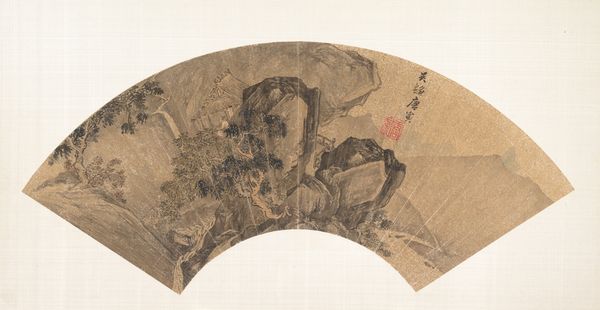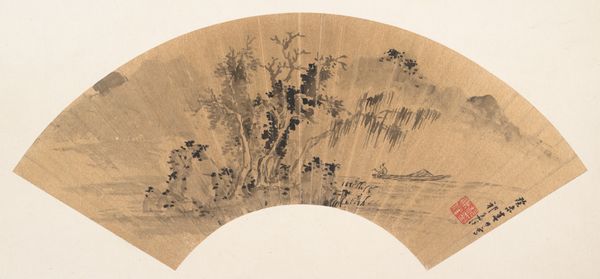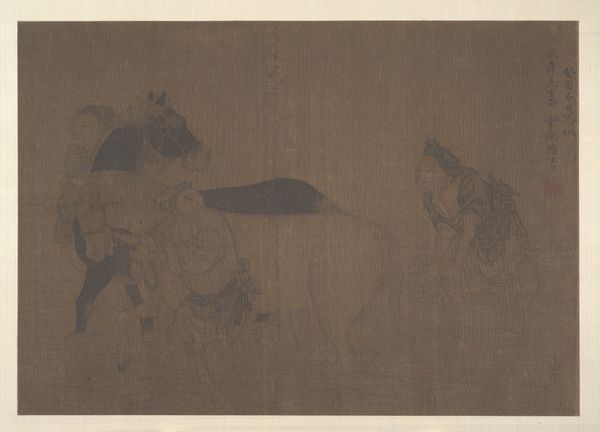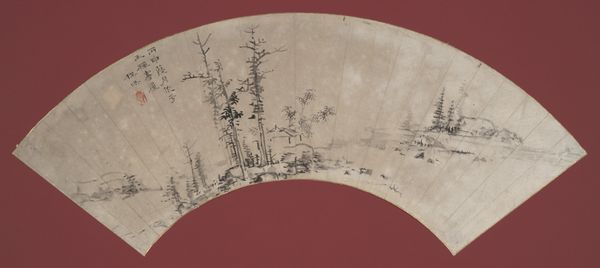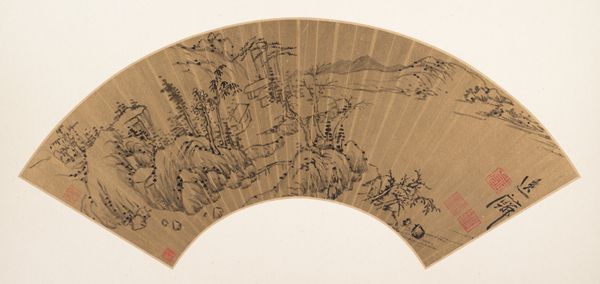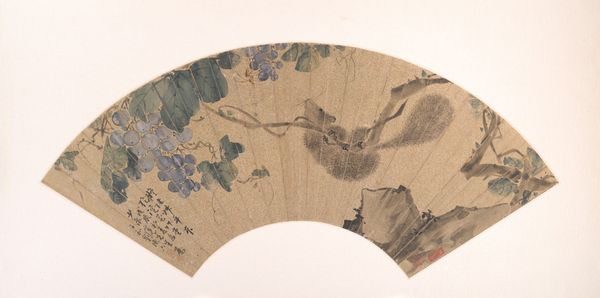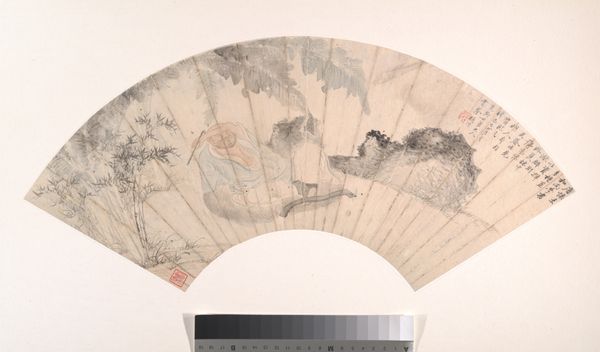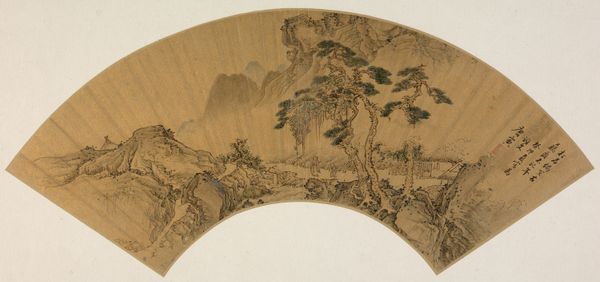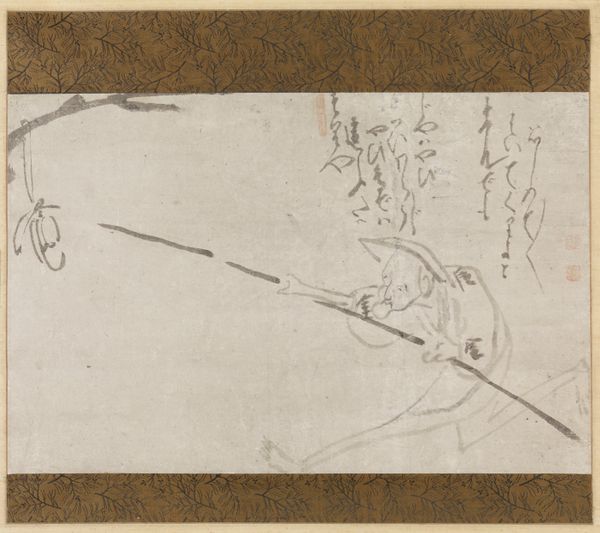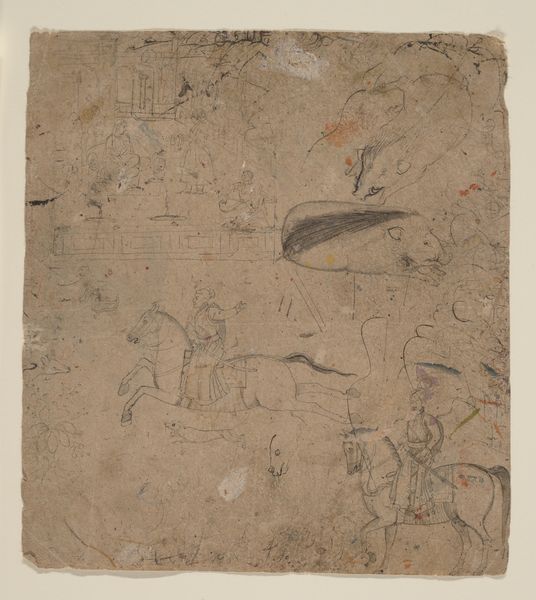
Dimensions: 10 1/8 × 21 in. (25.72 × 53.34 cm) (sheet)15 × 24 9/16 in. (38.1 × 62.39 cm) (mount)
Copyright: Public Domain
Sō Shizan created this ink on paper work, "Crabs and Tortoises," in eighteenth-century Japan, a time of relative peace under the Tokugawa shogunate. Here, Sō's light brushstrokes depict creatures associated with longevity and good fortune. The crabs and tortoises, rendered with a minimalist flair, might symbolize a wish for long life, a common theme in Edo period art. But what does it mean for an artist to represent this wish? Japan's strict social hierarchy influenced artistic patronage and subject matter. Artists like Sō navigated these constraints, sometimes subtly critiquing or reinforcing societal values through their work. This piece can be understood by exploring the cultural meanings ascribed to animal symbols, considering also the artist's status and the painting's intended audience. As historians, we can delve deeper by consulting period texts on symbolism, examining other works by Sō Shizan, and researching the social customs of the Edo period. By situating "Crabs and Tortoises" within its original context, we uncover the complex interplay between art, culture, and society.
Comments
No comments
Be the first to comment and join the conversation on the ultimate creative platform.

